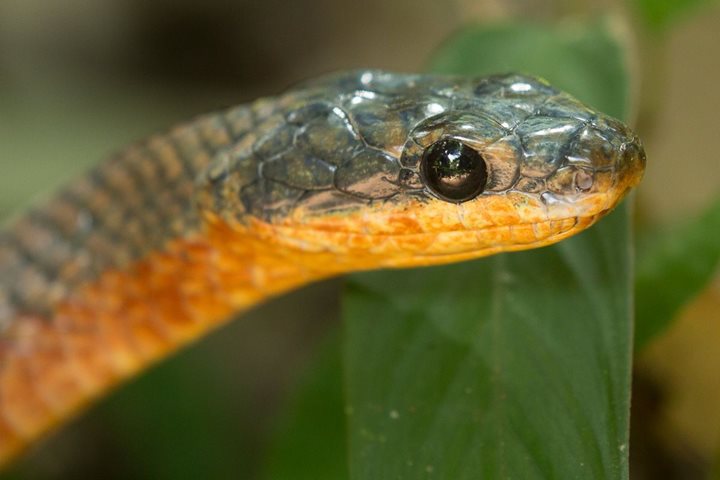Feliz Navidad and welcome to Costa Rica. National Geographic Sea Lion slowly and quietly entered in the early hours of the morning into the majestic Golfo Dulce, a beautiful and pristine gulf with a depth of close to 700 ft. It is surrounded by a lush tropical rain forest, which looks impenetrable at a quick look, making us feel like we are in the middle of nowhere, but as they day progressed we found ourselves in different scenarios.
After clearing customs in the port of Golfito, which used to be for banana exportations in the 1970’s, we headed into the Golfo Dulce, where we dropped anchor in front of a dark pebbled beach frame with hundreds of coconut palms, and a little sign that said Casa Orquideas, our fist outing of a well-packed day. This manicured garden is well taken cared by Ron and Trudy Mac Allister, a couple of expatriates from the USA that decided to raise a family in this little paradise, first by planting fruit trees and vegetable for their own use and then just adding some plants to their garden. Little by little it became a plant lover’s paradise, as well a great location for bird watching. The staff took different trails in order to show our guests the most possible plants, but meanwhile colorful scarlet macaws squawk their way over and toucans sang all morning long while woodpeckers peck their way on an old tree stump.
After the walks, what better than a dip in these sweet gulf waters to freshen up and get ready for our second adventure of the day. After lunch, we repositioned the ship to one of the inner corners of this gulf in order to enjoy the mangrove ecosystems which grow in the mouth of the Esquinas River, which it is actually the entrance of our newest national park: Piedras Blancas. For this second outing, the options were plenty. The first ones to leave the ship were the guests that chose to walk in the rain forest of a private property, with majestic towering trees and open ground areas for bird watching. The second departure was for those who wanted to explore the mangroves but at their own pace in their own transportation vehicle, kayaks. Accompanied by one of our staff they discovered the up close and personal view of a mangrove forest. And last but not least, the ones that wanted to enjoy the mangroves but with a private guide on each expedition landing craft.
As we all learned today, the mangroves are a group of plants that tolerate salty water environments which required warm water temperature and a calm surf. They don’t belong to a particular taxonomic group but more to a group of plants which tolerate brackish ecosystems. By itself a mangrove might not look diverse but without them, the richness of fish life in the ocean will decline, because many species used their entangled roots as protection from bigger prey until they are big enough to return to the ocean. They are great places to observe herons, lizards, ospreys, egrets, and ibises, but today we added a couple of non-common sights, a couple of tree boas and sleepy opossum and a troop of white-faced capuchin monkeys.
As we all returned to the ship, the sun was shining its last rays over the cloudy mountains of the rain forest which will be tomorrow’s destination. Welcome to Costa Rica.







